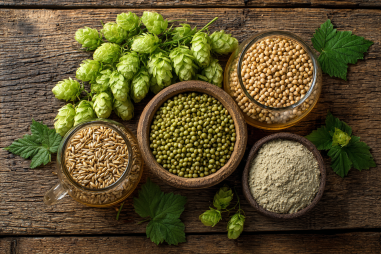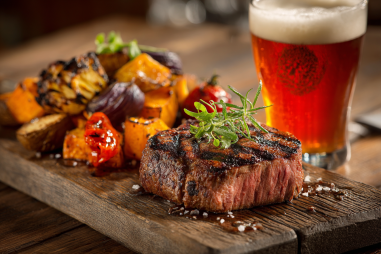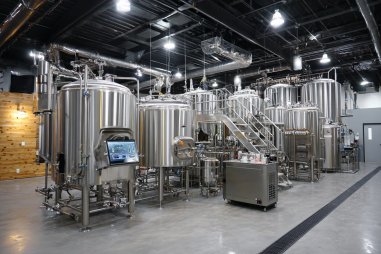Yeast is one of the key ingredients in brewing beer, and when it comes to Hefeweizen, a traditional German wheat beer, the yeast strains used are particularly important. These yeast strains not only ferment the sugars but also contribute distinctive flavors and aromas that define the style. Whether you’re a homebrewer or simply a curious beer enthusiast, understanding the nuances of Hefeweizen yeast strains will deepen your appreciation for this beloved beer.
The Role of Yeast in Beer Making
At its core, brewing beer involves four essential ingredients: water, malted grains, hops, and yeast. While malt and hops provide sweetness and bitterness, yeast is the living organism responsible for fermentation. Yeast consumes the sugars extracted from the grains and converts them into alcohol and carbon dioxide, giving beer its alcoholic content and carbonation. But yeast does much more than just ferment; it also produces a range of secondary compounds that influence a beer’s aroma, flavor, and mouthfeel.
In ales, including Hefeweizens, the brewing yeast is typically a strain of Saccharomyces cerevisiae, a top-fermenting yeast. The specific characteristics of the yeast strain used can greatly affect the final product, especially when it comes to the complex and signature flavors found in wheat beers.
Saccharomyces cerevisiae Strains Used in Hefeweizen
Hefeweizen yeast strains are unique varieties of Saccharomyces cerevisiae specially cultivated for traditional German wheat beers. Unlike many ale strains used for other beer styles, these strains are known for producing prominent esters and phenols during fermentation. This means they generate flavor compounds beyond the usual maltiness or bitterness.
Two main groups of yeast strains are often referenced in Hefeweizen brewing:
- Traditional Bavarian strains: These are the classic strains used in southern Germany. They are known for producing a strong mix of banana-like isoamyl acetate esters and clove-like 4-vinyl guaiacol phenols. These yeast strains give Hefeweizen that distinct aromatic character and a creamy, smooth mouthfeel.
- Modern or hybrid strains: Some brewers opt for yeast strains that are less intense but more controlled versions of traditional strains. These can be particularly popular for achieving a cleaner fermentation profile, highlighting malt and other flavors more than the yeast character itself.
The choice of strain impacts not just flavor but also the fermentation dynamics and the appearance of the finished beer.
How Yeast Creates Banana and Clove Flavors
One of the most fascinating aspects of Hefeweizen yeast is its ability to create the characteristic banana and clove flavors that many people immediately associate with this style. These flavors come from specific chemical compounds produced during fermentation:
- Isoamyl Acetate: This ester gives Hefeweizen its distinctive banana aroma and taste. Esters are fruity compounds formed by yeast when they metabolize sugars. Isoamyl acetate is also found in other beers and even in fruits, but in Hefeweizen, it stands out as a hallmark.
- 4-Vinyl Guaiacol (4VG): This phenolic compound produces spicy, clove-like notes. Its formation is influenced by the presence of ferulic acid in wheat malt, which the yeast can convert into 4VG.
The balance between these two compounds is crucial—too much clove can make a beer taste medicinal, while too much banana can overwhelm the palate. Skilled brewers manage fermentation variables like temperature and oxygen exposure to encourage the right balance for the desired flavor profile.
Differences Between Traditional and Modern Yeast Strains
Traditional Hefeweizen yeast strains are celebrated for their robust, complex ester and phenol production, but this also means they can be somewhat unpredictable. Factors such as fermentation temperature, wort composition, and oxygen levels influence the expression of banana and clove flavors dramatically. These yeast strains also tend to produce more haze due to their flocculation behavior and the presence of certain proteins and polyphenols in wheat beer.
Modern or hybrid strains, on the other hand, are selected or engineered to produce a cleaner fermentation with more consistent performance. These strains still generate some phenolics and esters but with milder intensity. Brewers may prefer them when they want to highlight other ingredients or aim for a more restrained Hefeweizen style. The tradeoff is that sometimes the signature “funk” of a traditional Hefeweizen may be less pronounced.
Effects on Fermentation and Haze Formation
Besides flavor, Hefeweizen yeast strains impact fermentation kinetics and the beer’s appearance. Because these strains typically have moderate to low flocculation, they remain suspended in the beer for longer periods, resulting in the famous cloudy or hazy look that “Hefe” (meaning “yeast” in German) implies. This haze comes from yeast cells and protein-polyphenol complexes naturally present in wheat malt.
Fermentation temperatures for Hefeweizen yeast usually range from 62°F to 75°F (17°C to 24°C), depending on the strain and desired flavor intensity. Higher temperatures tend to enhance ester and phenol production, increasing banana and clove character. Conversely, cooler fermentations produce cleaner beers but might reduce the complexity brewers seek.
During fermentation, Hefeweizen yeast also metabolizes some unique constituents in wheat malt, contributing to its creamy mouthfeel and slightly frothy head. The interaction between yeast metabolites and wheat-derived proteins strengthens the beer’s foam and texture, making it a delightful drinking experience.
Tips for Homebrewers Using Hefeweizen Yeast
For homebrewers looking to craft an authentic Hefeweizen, choosing and managing the yeast strain is essential. Here are some practical tips to get the best results:
- Select the right yeast strain: Look for yeast labeled specifically as Hefeweizen or wheat beer yeast. German strains from manufacturers like Wyeast or White Labs are popular choices for their traditional profile.
- Maintain proper fermentation temperature: Keep fermentation temperatures between 65°F and 72°F to strike a good balance of esters and phenols. Avoid excessive heat that could produce off-flavors.
- Use wheat malt generously: The phenolic clove character depends on ferulic acid found in wheat malt—typically 50% or more of the grain bill in Hefeweizen recipes.
- Oxygenate your wort well: Yeast requires oxygen early in fermentation to multiply effectively and healthily produce flavor compounds.
- Avoid aggressive yeast pitching: Pitching too much yeast can sometimes suppress ester production; a moderate pitch rate helps achieve characteristic flavors.
- Allow plenty of time: Hefeweizens benefit from adequate fermentation and conditioning time to develop nuances and mellow harshness.
- Don’t filter or overly clarify: The traditional haze is part of the style, so avoid filtration or excessive fining that removes yeast and proteins contributing to mouthfeel and aroma.
By paying attention to these factors, homebrewers can successfully replicate the complex and refreshing experience of a classic Hefeweizen right in their own homes.
Hefeweizen yeast strains are indeed the unsung heroes behind the style’s distinctive character. From the iconic banana and clove flavors to the inviting haze and smooth texture, these yeasts shape the whole drinking experience. Whether using traditional strains steeped in history or exploring newer variants, understanding the subtle science of yeast metabolism allows brewers and enthusiasts alike to appreciate the art and craft behind every pour of this timeless beer.







